
 Department of Conservation and Recreation
Department of Conservation and Recreation
Conserve. Protect. Enjoy.
 Department of Conservation and Recreation
Department of Conservation and Recreation
By Guest AuthorPosted June 06, 2024
Written by Megan Roark, Natural Tunnel State Park
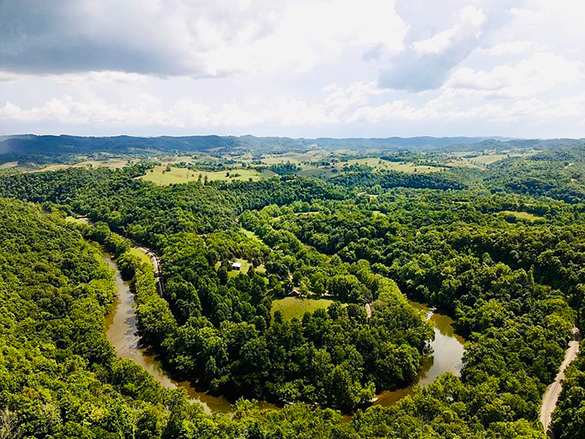
Aerial view of the Clinch River
There are many reasons to visit Clinch River and Natural Tunnel state parks, some of which aren’t as obvious as the stunning views of the Appalachian Mountains or the natural wonder of the tunnel.
From caves and historical blockhouses at Natural Tunnel to remnants of an 18th-century French settlement and sights from Sugar Hill at Clinch River, it is not too hard to forget what you have flowing right below you.
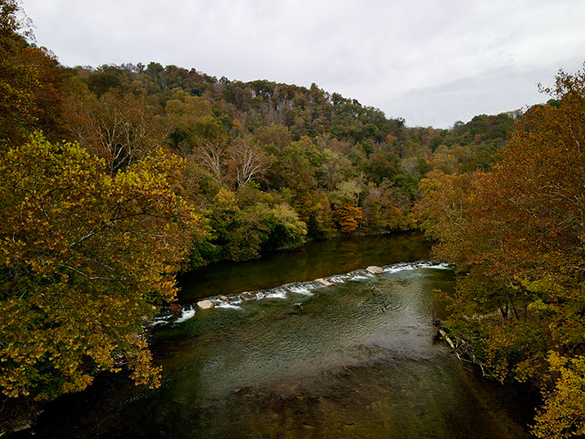
Burton’s Ford Falls along the Clinch River
Spanning roughly 300 miles, the Clinch originates in the Appalachian Mountains of southwestern Virginia and flows southwest into northeastern Tennessee.
The vital waterway is renowned for its rich biodiversity and ecological significance, and its watershed supports diverse habitats that benefit numerous plant and animal species. Additionally, the Clinch provides a range of recreational opportunities, including fishing and boating.
While the river flows through Clinch River State Park, it’s located about 5 miles from Natural Tunnel. One of the Clinch’s many tributaries is Stock Creek, which played an important role in carving out the Natural Tunnel and still flows through the park today.
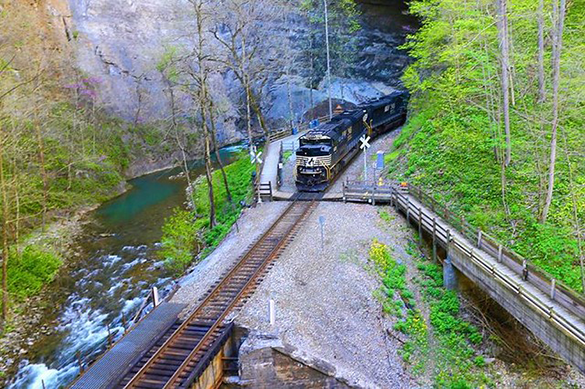
Stock Creek at Natural Tunnel State Park | Photo courtesy of Chris Peek
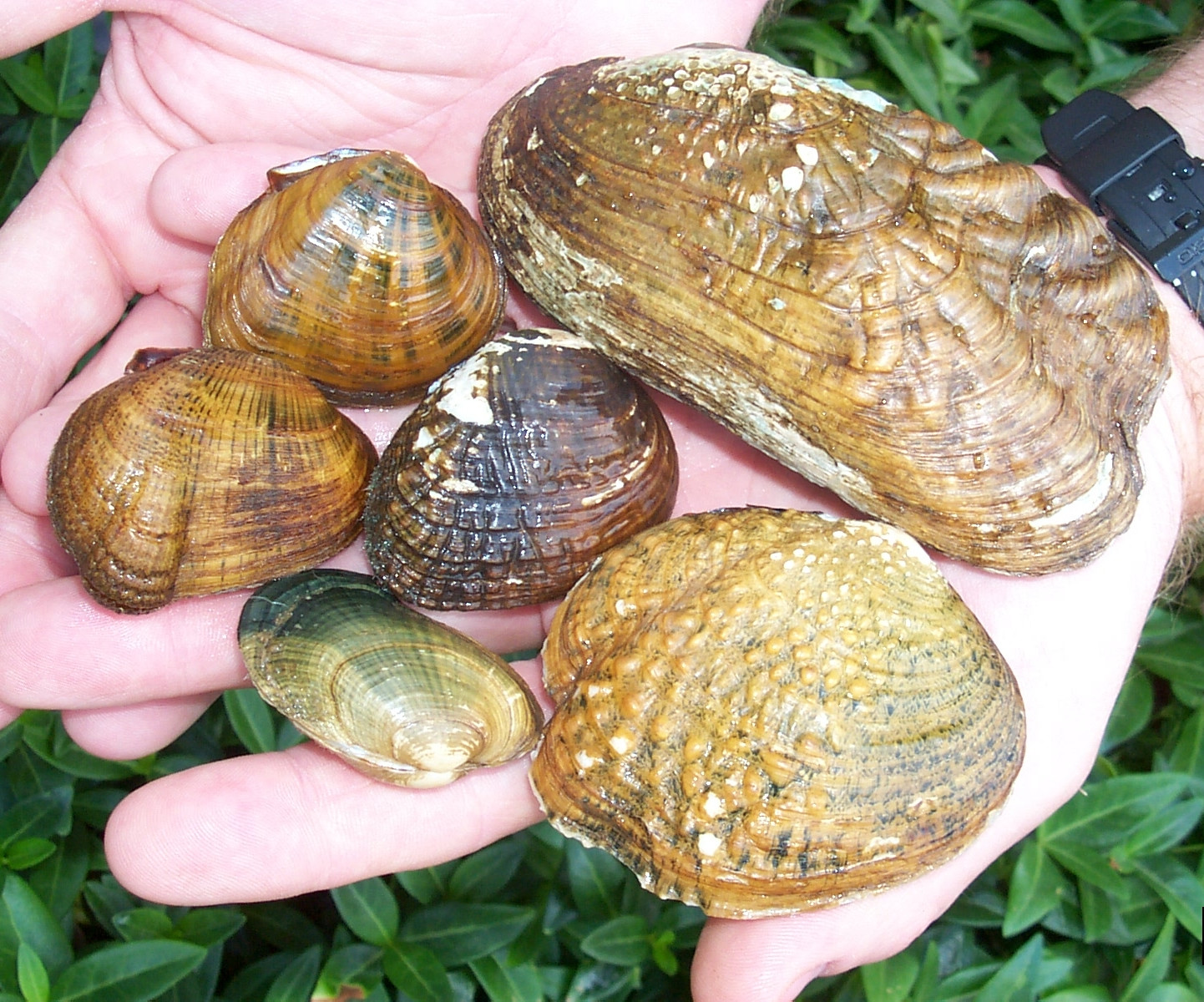 Endangered freshwater mussels in the Clinch River (USFWS photo)
Endangered freshwater mussels in the Clinch River (USFWS photo)
The Clinch is an ecological marvel, housing around 50 species of freshwater mussels, some of which are found nowhere else in the world, and over 100 species of small fish like darters and minnows.
It is easy to say, “The Clinch River is important for its diversity of mussels,” but it is harder to understand exactly what that means. What is a freshwater mussel? What is their role in the ecosystem? Why should humans care?
Freshwater mussels are mollusks, specifically bivalves, that are often overlooked as the interesting animals they are. These aquatic powerhouses are similar to their more recognized cousins, oysters and clams. They are more than just pretty, shiny shells on the bottom of a river we see passing over in a kayak.
Mussels are essential to the aquatic environment of rivers and streams. They are natural water filters, pumping gallons and gallons of water a day to filter out harmful components in the water like bacteria, algae, and even fungal spores. Mussels don’t just contribute to improving water quality, but also are an essential part of the food web, provide habitats for some invertebrates and even fish when shells are left empty, and prevent sedimentation and erosion.
Humans have used freshwater mussels in different ways for centuries whether it be for food, tools, or things like jewelry and buttons. Scientists continue to use mussels as an indicator of waterway health but have run into an issue — the mussels have been dying out. In Virginia, only 30% of mussel species are considered stable, leaving a whopping 31 species in the drainage as threatened or endangered.
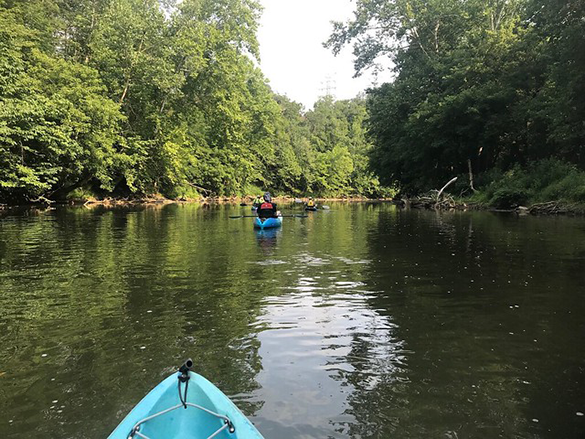
Kayaking the Clinch
Clinch River and Natural Tunnel state parks strive to be advocates for the Clinch and its biodiversity and want you to be, too.
The parks have taken the initiative to educate the public on mussels with safe recreation. At Clinch River, you’ll find signage at boat launches that highlight the importance of protecting the mussels’ habitats and tips on how to recreate around them responsibly.
At Natural Tunnel, the park hosts educational guided kayaking trips along the Clinch and a snorkeling program called Flexing our Mussels, which allows participants to get up close and personal with the freshwater powerhouses.
Click here to find educational programs at Clinch River and Natural Tunnel state parks.
If you’re ready to start planning a trip to one of these Southwest Virginia parks, please go to virginiastateparks.gov.
Categories
State Parks

